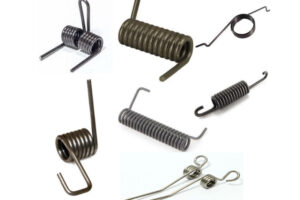An In-depth Look at the Torsion Spring Manufacturing Process

Torsion springs are essential components used in various industries, ranging from automotive to aerospace, electrical appliances to furniture, and more. These springs are designed to store and release rotational energy, providing torque or rotational force for a wide range of applications. In this article, we will delve into the manufacturing process of torsion springs, exploring the techniques, materials, and considerations involved in producing high-quality and reliable springs.
1. Design and Engineering:
The first step in the torsion spring manufacturing process begins with proper design and engineering. Engineers analyze the specific requirements of the application, including torque, angular deflection, space limitations, and environmental factors. By considering these variables, they can determine the appropriate wire diameter, coil diameter, leg length, and number of coils to achieve the desired torque and lifespan of the spring.
2. Material Selection:
Choosing the right material is crucial to ensure the performance and durability of torsion springs. Commonly used materials include high-carbon steel, stainless steel, and alloy steels, which offer excellent strength and corrosion resistance. The selection depends on factors such as the working environment, temperature range, and the load-bearing capacity required by the spring.
3. Wire Forming:
The wire forming process involves shaping the chosen wire material into the desired configuration for torsion springs. It usually begins with straightening and cutting the wire to the required length. The wire is then fed into a CNC machine or a mechanical coiling machine that forms it into the desired shape, following the predetermined design specifications.
4. Heat Treatment:
To enhance the mechanical properties and improve the spring’s performance, the coiled wire is subjected to heat treatment. This process typically involves heating the wire to a specific temperature and then rapidly cooling it to induce desired properties such as increased toughness, hardness, and elasticity. Heat treatment helps to minimize stress and improve the longevity and resilience of the torsion spring.
5. Surface Finishing:
The surface finishing process ensures the aesthetic appeal and protection of the torsion springs against corrosion and wear. It typically involves processes like shot peening, electroplating, powder coating, or painting, depending on the specific requirements and environmental conditions in which the spring will operate.
6. Quality Control:
To maintain consistency and reliability, stringent quality control measures are implemented throughout the torsion spring manufacturing process. This includes conducting dimensional inspections, load testing, fatigue testing, and verifying compliance with industry standards and customer specifications. Only springs that meet the specified criteria are deemed suitable for use.
Conclusion:
Torsion springs play a vital role in various industries, providing rotational force and assisting in the smooth operation of countless applications. The manufacturing process involves careful consideration of design, material selection, wire forming, heat treatment, surface finishing, and quality control. By ensuring excellence in each stage of production, manufacturers can deliver torsion springs with optimal performance, durability, and reliability, meeting the diverse needs of their customers across industries.
Note: The provided information is educational and should serve as a general guide. Specific manufacturing processes may vary depending on the manufacturer and the requirements of the torsion springs.






